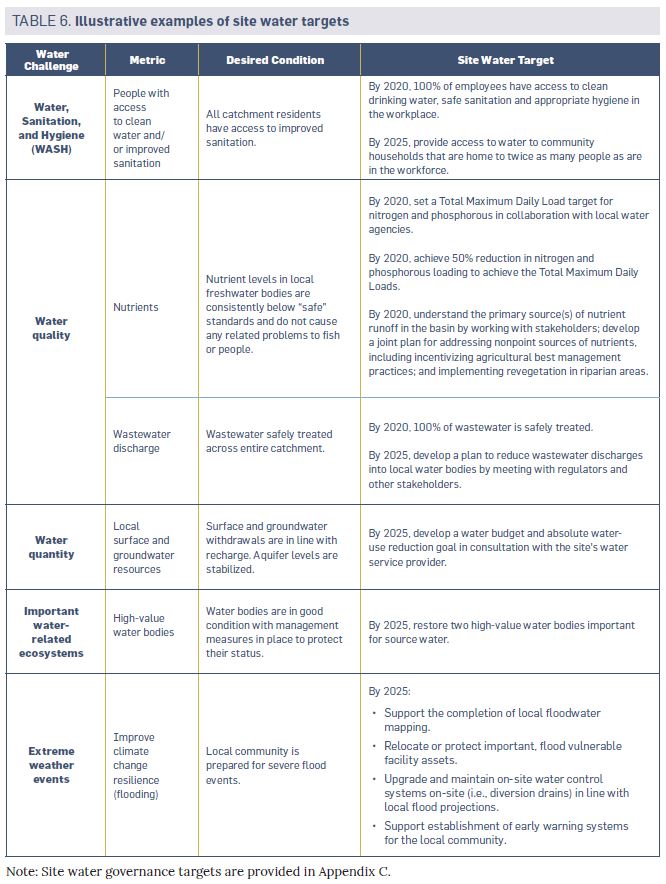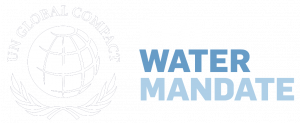By reducing water risk, capitalizing on opportunities and contributing to public policy priorities, site water targets can deliver tangible business value and drive action to meet the desired conditions.
Prior to setting water targets, evaluate whether water-related activities are already in place (i.e., the collective action projects outlined in Box 4, public water policy objectives, NGO activities), so the site can assess opportunities to contribute to, or align with, existing efforts before starting new activities. This will reduce the overall cost and effort required to meet the desired conditions.
Once the site determines its contribution and evaluates opportunities to align with existing water stewardship initiatives, collective action efforts, and public policy initiatives in the catchment, the site should set targets that:
- Are specific, measurable, achievable, relevant and time-bound (SMART);
- Maintain accountability;
- Encourage other water users to set similar targets; and
- Garner broad external and internal support.

Once the targets are set, the site should encourage other industrial, domestic, and agricultural water users in the catchment to set similar targets to support catchment-level improvements. The site should measure progress towards achieving targets and goals by defining and using specific metrics, linked to a detailed work plan of actions, with buy-in from internal and external stakeholders.
The site should also develop an implementation plan by using existing industry practices. The implementation plan is meant to identify, assign metrics to, and deliver on the actions to meet targets, and should include resources to implement the plan.
